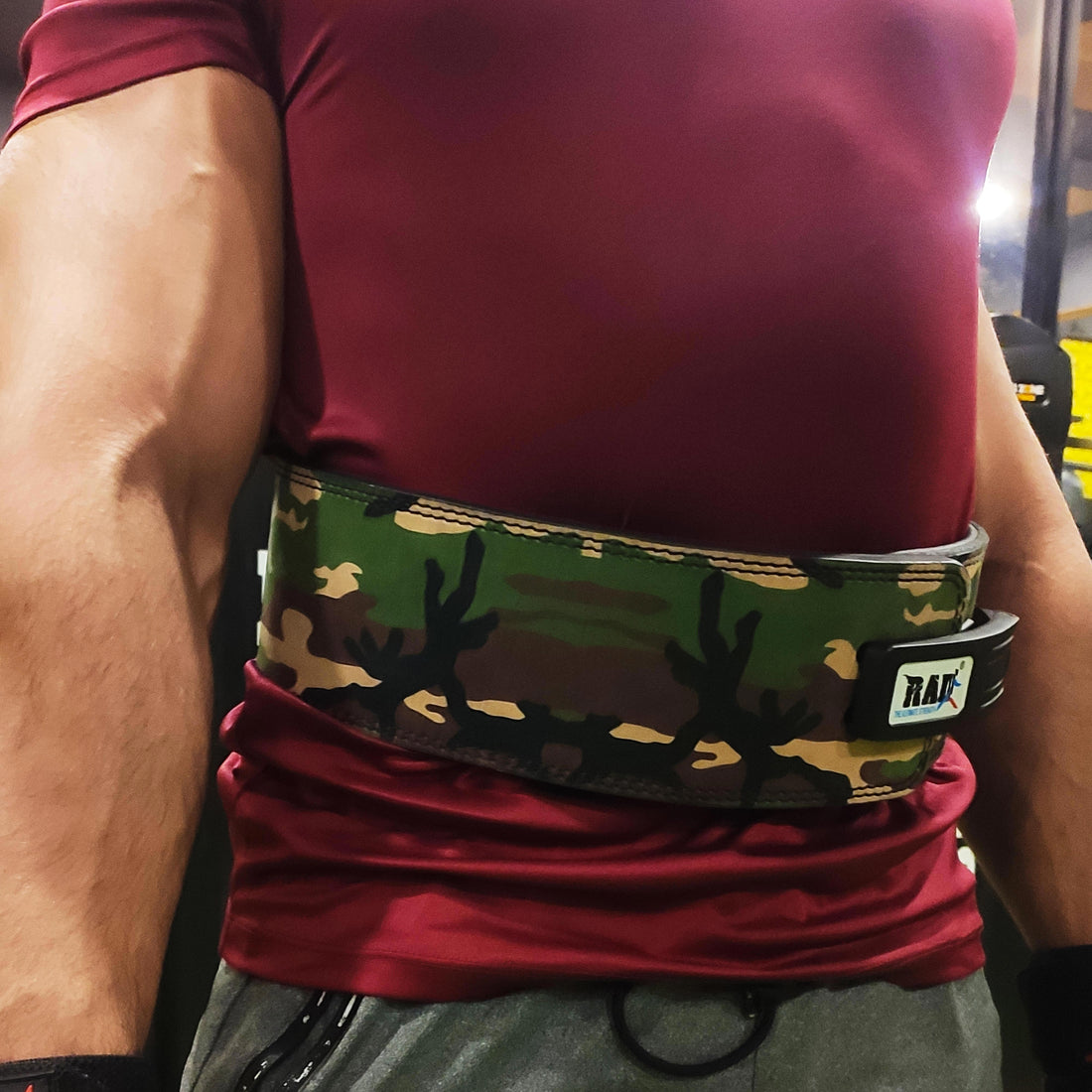
Lever Belt: A Must Have for Weightlifters
Share
Lever Belts for Weightlifting and Back Support
Weightlifting is a General and popular form of exercise that focuses on building strength & Back Support. To ensure safety and maximize performance fitness enthusiasts often use specialized equipment. One such important piece of gear is the lever belt.
What is Lever Belt
Lever Belt is a type of Weight Lifting Belts to provide support to lower back & core during heavy lifts. It has a thick and sturdy strap made from high quality leather. The main feature of a Lever Belts is its Lever Buckle mechanism which is fast and easy to adjust.
Advantages of Lever Belt
Using a Belt offers numerous advantages for weightlifters:
Enhanced Stability:
The Lever belt provides support to lower back, reduces the risk of injury and helps in proper spinal alignment during heavy lifts.
Increased Intra-Abdominal Pressure:
Lifters can increase intra-abdominal pressure which gives stability to core and helps in generating more strength during lifts.
Improved Performance:
The added support & stability provided by a belt allows lifters to lift heavier weights & perform movements with better technique ultimately leading to better performance.
Injury Prevention:
It prevents hyperextension and excessive spinal flexion, reduces the risk of strains, sprains and other back injuries.
Choosing the Right Lever Belt
When selecting a Best Lever Belt, consider the following factors:
Material:
Go for high quality leather or synthetic belt that is durable and flexible.
Width and Thickness:
Choose a belt with right width and thickness to get optimal support and comfort.
Size and Adjustability:
The belt should fit around your waist and the lever buckle should be easy to adjust for a secure fit.
Brand and Reputation:
Research reputable brands that specialize in weightlifting belts and read customer reviews to ensure a reliable purchase.
How to Wear a Lever Belt
To wear a belt correctly, follow these steps:
- Place the Lever Belt around your waist with the lever buckle on your right side.
- Pull tight but not too tight.
- Engage your core and brace your abs.
Adjusting and Securing a Lever Belt
To adjust and secure a belt, perform the following actions:
- Press the lever down to release.
- Tighten or loosen.
- Once you have your desired tightness pull the lever buckle up to lock it in place.
Proper Technique and Form
Using a Weight Lifting Belt Lever effectively requires proper technique and form:
Engage Your Core:
Before you lift take a deep breath and contract your abs. This will create intra-abdominal pressure and stabilize your spine.
Maintain Good Posture:
Keep your back straight, shoulders back and chest up through the entire movement.
Avoid Overreliance:
While a lever belt provides support it shouldn’t compensate for bad technique or form. Focus on mastering the correct lifting mechanics so you don’t become dependent on the belt.
Common Mistakes to Avoid
When using a Belt, be mindful of the following common mistakes:
Wearing the Belt Too Tight:
A Lever Belt should be tight but not too tight. Too tight and you’ll restrict your breathing and performance.
Improper Placement:
Place the belt just above your hips covering your lower back and abdominal area.
Ignoring Other Training Factors:
While a Weight Lifting lever belt provides support you need to work on overall strength, mobility and technique to get the most out of it.
Lever Belt Maintenance and Care
To ensure the longevity of your belt, follow these maintenance tips:
Clean and Condition:
Clean with a damp cloth and condition to keep it flexible and not crack.
Avoid Excessive Moisture:
Don’t expose the belt to too much moisture as it can damage the leather or synthetic materials.
Store Properly:
Hang or lay flat in a cool dry place when not in use, away from direct sunlight or extreme temps
Lever Belt vs. Other Types of Weightlifting Belts
While lever belts are highly effective, there are other types of weightlifting belts available. Some popular alternatives include:
Prong Belts:
Prong belts use a metal buckle with multiple prongs for adjustability. Simple and reliable.
Velcro Belts:
Velcro belts are quick and easy to adjust but not as supportive as lever or prong belts.
Tapered Belts:
Tapered belts are narrower at the front so you have more range of motion while still getting core support.
Lever Belts for Powerlifting
Lever Belts are used in powerlifting competitions. Their secure and adjustable design allows you to perform at your best during heavy lifts like squats, deadlifts and bench press. Check the rules of your powerlifting federation before competing.



